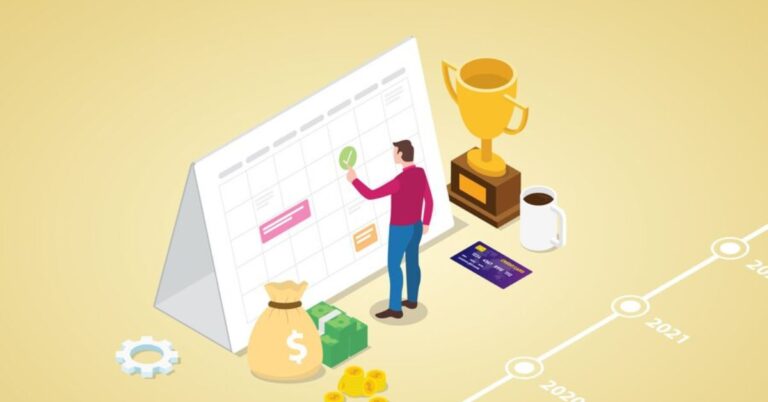Navigating the Digital Shift in Procurement: Strategies for Success
In recent years, the procurement systems sector has witnessed a significant transformation, driven by the relentless pace of digital innovation. This digital shift is not just about adopting new technologies; it’s about rethinking procurement strategies to leverage digital tools for improved efficiency, cost reduction, and innovation in procurement systems.
Adapting to these digital shifts in procurement systems cannot be overstated, as they offer a pathway to survive and thrive in today’s competitive business landscape.
This article explores effective strategies for navigating the digital shift in procurement systems, aiming to enhance organizational success through digital means.
Understanding the Digital Shift in Procurement
What It Is
Digital Procurement uses new tech to improve buying and working with suppliers. It includes cloud services, data analysis, AI, and IoT to make everything smoother and smarter.
Why It Matters
Changes in tech and what businesses need are pushing procurement to go digital. This means companies can make better decisions, work more efficiently, and be ready for changes in the market. It’s about staying competitive by cutting costs and being more flexible.
The Benefits
Going digital helps companies get a clear view of their spending, how well suppliers are doing, and where there might be risks. This makes buying goods and services faster and smarter, improving how the supply chain works.
- Enhanced Efficiency: Digital procurement automates many time-consuming tasks associated with traditional procurement methods. By streamlining operations, companies can complete procurement activities faster, from sourcing to finalizing supplier contracts. This efficiency reduces the time and effort spent on administrative tasks, allowing teams to focus on strategic decisions.
- Improved Decision Making: With advanced analytics and AI, digital procurement offers deep insights into spending trends and supplier performance. Companies can use this data to make informed decisions, identify areas where they can save money and spot potential issues before they become problems. This data-driven approach helps businesses optimize their procurement strategies for better outcomes.
- Increased Cost Savings: Digital tools help identify opportunities for cost reduction by analyzing spending patterns and supplier negotiations. By automating procurement processes, companies reduce the likelihood of human error, further cutting unnecessary expenses. These savings can then be redirected toward other strategic initiatives within the organization.
- Enhanced Supplier Relationships: Digital procurement platforms provide a clearer picture of supplier performance, enabling more effective management of supplier relationships. Companies can easily identify top-performing suppliers and work with them to negotiate better terms or address any issues promptly. This improves the supply chain’s reliability and fosters long-term partnerships with suppliers.
- Risk Management: Digital procurement tools help identify and mitigate supply chain risks. By monitoring supplier performance and market trends, companies can anticipate potential disruptions and take proactive steps to mitigate these risks. This capability is crucial for maintaining a resilient supply chain in a dynamic market environment.
Strategies for Successful Digital Transformation
Leadership and Change Management
Successful digital transformation in procurement begins at the top. Securing executive sponsorship and creating a clear vision for what digital transformation should achieve are crucial first steps. Alongside this, developing a change management plan is essential to address resistance within the organization, ensuring all stakeholders are aligned and committed to the digital journey.
Technology and Infrastructure
Choosing the right digital tools and platforms is critical. Organizations must evaluate options on their current capabilities and their potential to scale and adapt to future needs. Investing in cybersecurity measures is non-negotiable, as protecting sensitive data is paramount in the digital age.
Data Management and Analytics
Implementing robust data governance practices ensures that procurement data is accurate, accessible, and secure. Leveraging analytics for informed decision-making transforms procurement from a tactical function to a strategic partner in the business, capable of delivering predictive insights that drive value.
Talent Development and Digital Literacy
The digital shift requires a workforce that is skilled in new technologies. Upskilling and reskilling employees to thrive in a digital environment is essential. Furthermore, hiring for digital expertise and fostering a culture of continuous learning ensures that the organization remains at the forefront of procurement innovation.
Future Trends in Digital Procurement
Emerging technologies like AI, blockchain, and IoT are set to further shape the future of procurement. These technologies promise to automate complex processes, enhance transparency, and improve the accuracy of demand forecasting. As we look ahead, digital procurement is expected to evolve into an even more strategic function, driven by data and technology.
Emerging Technologies Leading the Way
The future of procurement is being redefined by the rapid advancement of technologies such as artificial intelligence (AI), blockchain, and the Internet of Things (IoT). These innovations are poised to automate complex procurement tasks, increase transparency in transactions, and significantly enhance the precision of demand forecasting. The integration of these technologies into procurement processes marks a significant shift towards more efficient, transparent, and data-driven operations.
Strategic Evolution of Procurement
Looking forward, digital procurement is set to become a pivotal strategic function within organizations. This evolution is underpinned by a deep reliance on data analytics and technology to drive decision-making processes. As digital tools become more integrated into procurement activities, their role in shaping strategic initiatives, optimizing cost savings, and identifying new opportunities for value creation becomes increasingly critical. This shift not only streamlines procurement operations but also aligns them more closely with the broader strategic goals of organizations.
Automation and Efficiency
One of the key trends in the future of digital procurement is the increased use of automation to manage and execute procurement tasks. By leveraging AI and machine learning, organizations can automate routine tasks such as order processing and invoice management, freeing up human resources for more strategic activities. This automation extends to supplier selection and negotiation processes, where AI can analyze vast amounts of data to identify the best suppliers and optimize negotiation strategies.
Enhanced Transparency and Security
Blockchain technology is set to play a significant role in enhancing transparency and security within procurement processes. By creating immutable records of transactions, blockchain provides a transparent and secure framework for managing contracts, payments, and supply chain documentation. This reduces the risk of fraud and builds trust between buyers and suppliers, facilitating smoother and more reliable transactions.
Data-Driven Decision-Making
The future of procurement emphasizes the importance of data-driven decision-making. With advanced analytics and IoT, procurement teams can gain real-time insights into supply chain operations, monitor supplier performance, and predict market trends. This capability allows for more informed decision-making, enabling procurement to contribute proactively to strategic planning and risk management.







